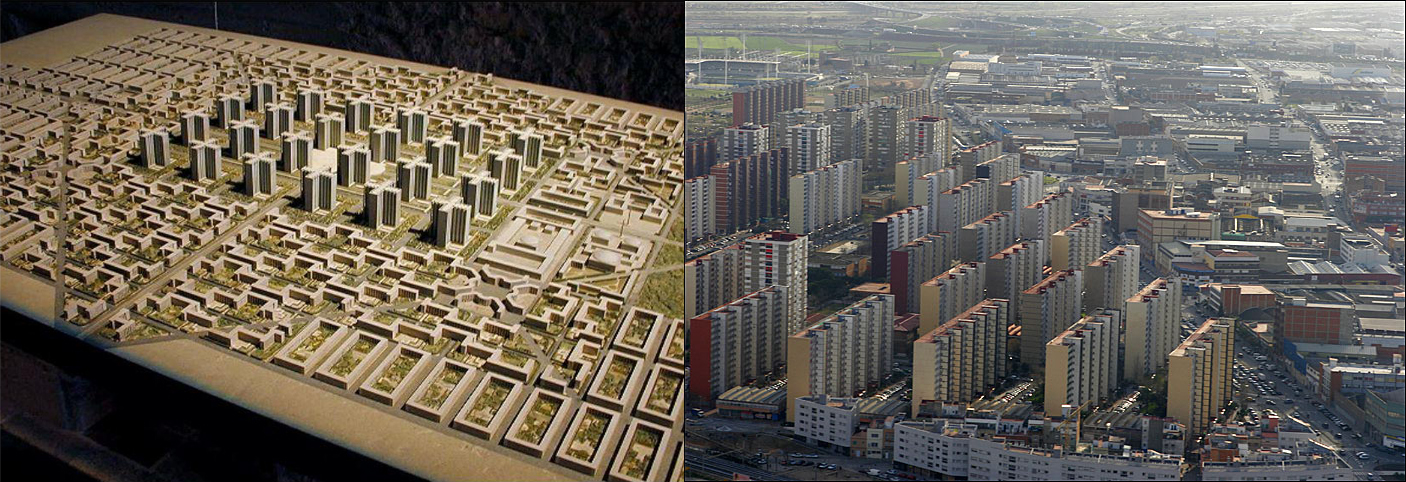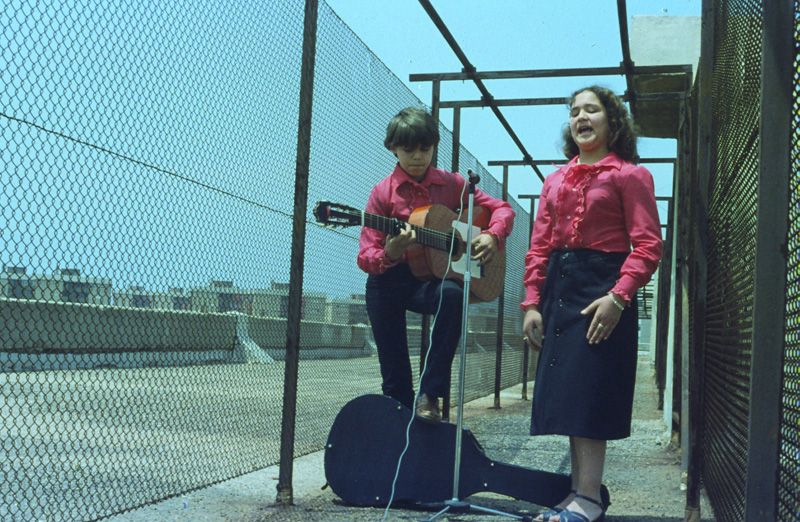

ANTI-MODULOR is not a project. ANTI-MODULOR is a label with which we intend to bring together a heterogeneous series of processes, actions, stories, and conversations that revolve around the ways in which we inhabit the city.
The contemporary city is ANTI-MODULOR because it has been built and planned based on productivism and speculation on goods that should be common. We are ANTI-MODULOR because we do not want a city projected on the basis of a false universalist ideal.
In February of this year, we began to inhabit a space located in the lower part of one of the apartment blocks in the Bellvitge neighborhood, in District VI of L’Hospitalet, a developmentalist reflection of the Ville Contemporaine. Chance (or at least not our will) wanted this space to be located at number

Our Roma neighbors make intensive use of public space, carrying out their daily lives in the street, on the sidewalks, and in the green areas in front of the doorway, especially the children. For them, our space is almost an extension of public space: they come down, knock on the door, enter, wander around, leave, re-enter, paint on the chalkboard wall, throw themselves on the floor, play… in turn, we have begun to go out with them into the street: to paint, to take measurements, to do interviews, we cross paths in the doorway, around the corner… We are negotiating these spatial uses, especially when the spaces are shared with other people, and gradually reaching agreements, understandings.
Perhaps the four or five families on our staircase and the adjacent number 13 are among the few Roma families living in Bellvitge, a neighborhood with more than 25,000 inhabitants. In contrast, the Gornal neighborhood has a much higher percentage of Roma population, close to 15% of a total of 7,200 inhabitants. Paradoxically, the Gornal public school has a Roma student population of 99%. Many of the Roma boys and girls on our staircase attend this school, while many non-Roma boys and girls from Gornal attend schools in Bellvitge.
The neighborhoods of Bellvitge and Gornal are completely separated by a huge urban scar: the train tracks that connect the center of Barcelona with the El Prat airport. Only three pedestrian bridges cross this gigantic barrier. Some of our neighbors literally or metaphorically cross these bridges to attend the Gornal school, while other non-Roma children from the Gornal neighborhood cross them in the opposite direction to attend schools in Bellvitge. We understand that this is a form of spatial segregation.

A few weeks ago, María Muñoz-Duyos invited us to participate in a conference entitled
Childhood and public space: a dialogue between art, education and urban space
, organized by the collective
Urbanitas-Berlin Barcelona
(of which María is a member) and the
Associació de Mestres Rosa Sensat
, and offered us to lead one of the workshops. Our proposal consists of inviting the participants in the workshop to accompany us, together with the boys and girls on our staircase, to travel that same route between number 11 Prat Street in Bellvitge and the Gornal school, crossing the bridges that connect both neighborhoods.
This workshop-walk will take place on July 7. Five days earlier, on July 2, we are organizing a binaural microphone construction workshop in the
physical space of LaFundició
. We will invite the participants in this last workshop to accompany us during the walk, and record with their newly built microphones whatever they deem pertinent. We intuit that observing the landscape from the body and from listening, relegating the acts of seeing to a second order, can help us build a non-hegemonic story about the city.
This walk does not have a defined objective, beyond observing the landscape and the territory, and reflecting on the ways in which they condition our horizon of possibilities, and at the same time, experimenting whether the action of crossing them and traveling through them, can or cannot alter their ordinary configuration. One thing seems clear to us: the aforementioned daily routes of the boys and girls of Bellvitge and Gornal are, in the agency they form with the territory itself, a political device that articulates power relations linked in turn to issues of race, age, and social class.
So our idea is to go for a walk in the company of a group of boys and girls, educators, architects, urban planners, sound freaks, teachers, artists… people of diverse social, cultural, and racial backgrounds with the purpose of placing ourselves within, between, and through the borders and hierarchies that separate all these identities; generate frictions that overflow their respective comfort zones and collectively build a monstrous knowledge.